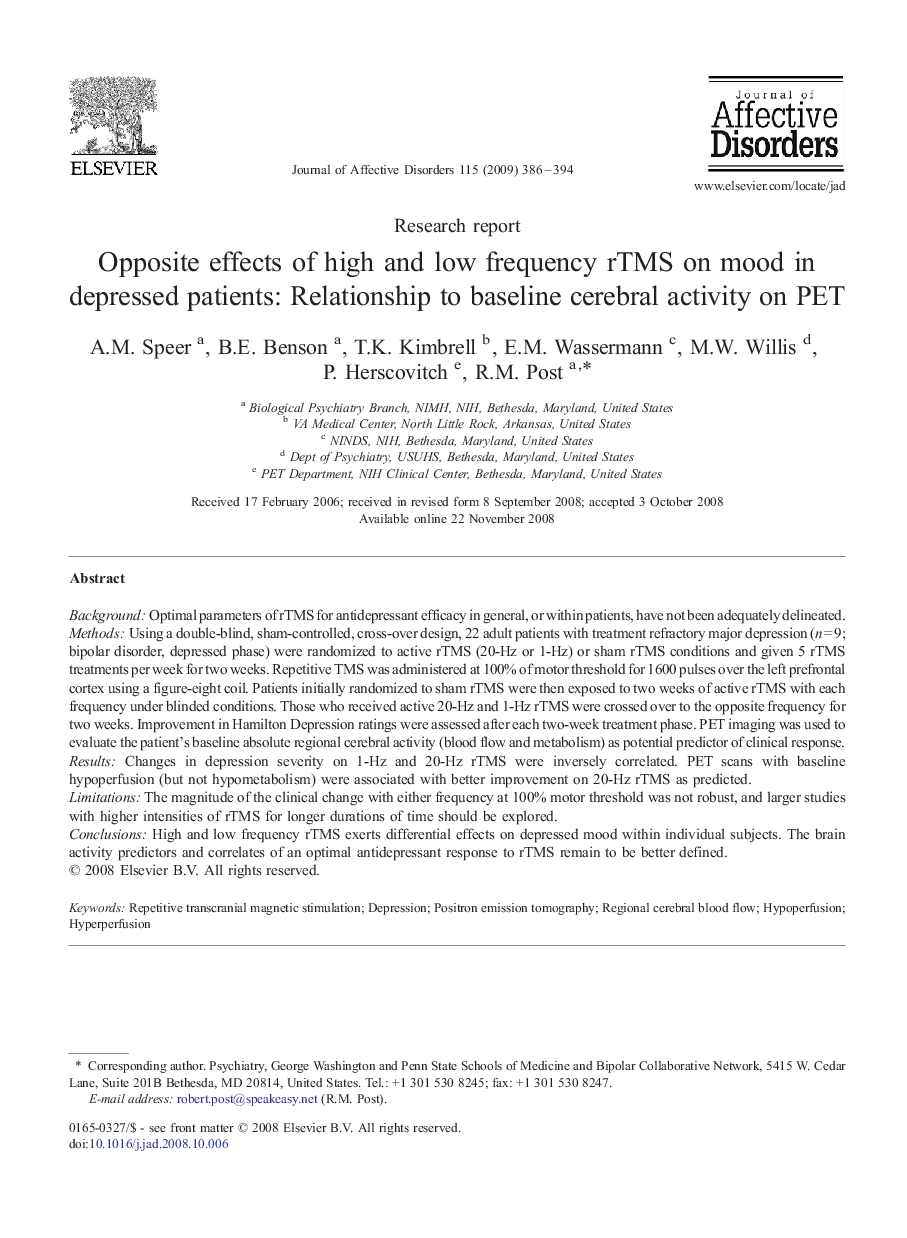| کد مقاله | کد نشریه | سال انتشار | مقاله انگلیسی | نسخه تمام متن |
|---|---|---|---|---|
| 4187154 | 1277620 | 2009 | 9 صفحه PDF | دانلود رایگان |

BackgroundOptimal parameters of rTMS for antidepressant efficacy in general, or within patients, have not been adequately delineated.MethodsUsing a double-blind, sham-controlled, cross-over design, 22 adult patients with treatment refractory major depression (n = 9; bipolar disorder, depressed phase) were randomized to active rTMS (20-Hz or 1-Hz) or sham rTMS conditions and given 5 rTMS treatments per week for two weeks. Repetitive TMS was administered at 100% of motor threshold for 1600 pulses over the left prefrontal cortex using a figure-eight coil. Patients initially randomized to sham rTMS were then exposed to two weeks of active rTMS with each frequency under blinded conditions. Those who received active 20-Hz and 1-Hz rTMS were crossed over to the opposite frequency for two weeks. Improvement in Hamilton Depression ratings were assessed after each two-week treatment phase. PET imaging was used to evaluate the patient's baseline absolute regional cerebral activity (blood flow and metabolism) as potential predictor of clinical response.ResultsChanges in depression severity on 1-Hz and 20-Hz rTMS were inversely correlated. PET scans with baseline hypoperfusion (but not hypometabolism) were associated with better improvement on 20-Hz rTMS as predicted.LimitationsThe magnitude of the clinical change with either frequency at 100% motor threshold was not robust, and larger studies with higher intensities of rTMS for longer durations of time should be explored.ConclusionsHigh and low frequency rTMS exerts differential effects on depressed mood within individual subjects. The brain activity predictors and correlates of an optimal antidepressant response to rTMS remain to be better defined.
Journal: Journal of Affective Disorders - Volume 115, Issue 3, June 2009, Pages 386–394